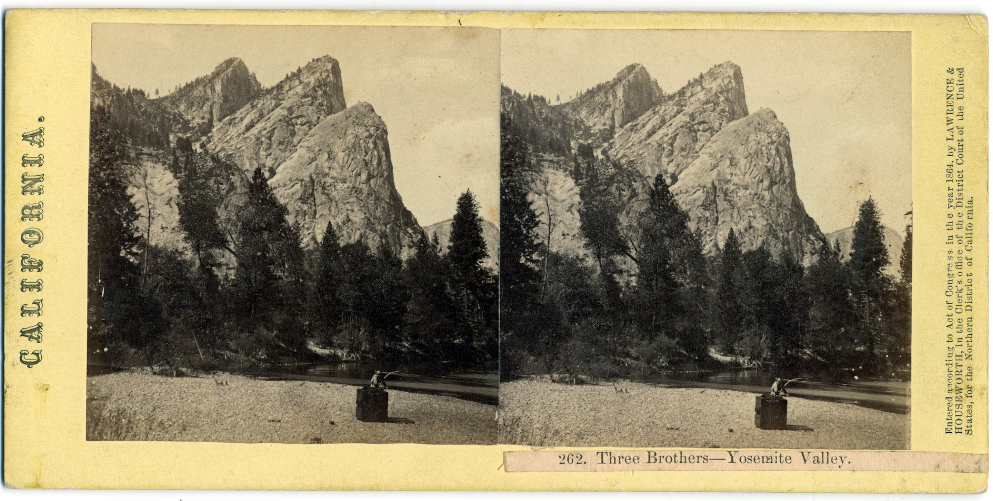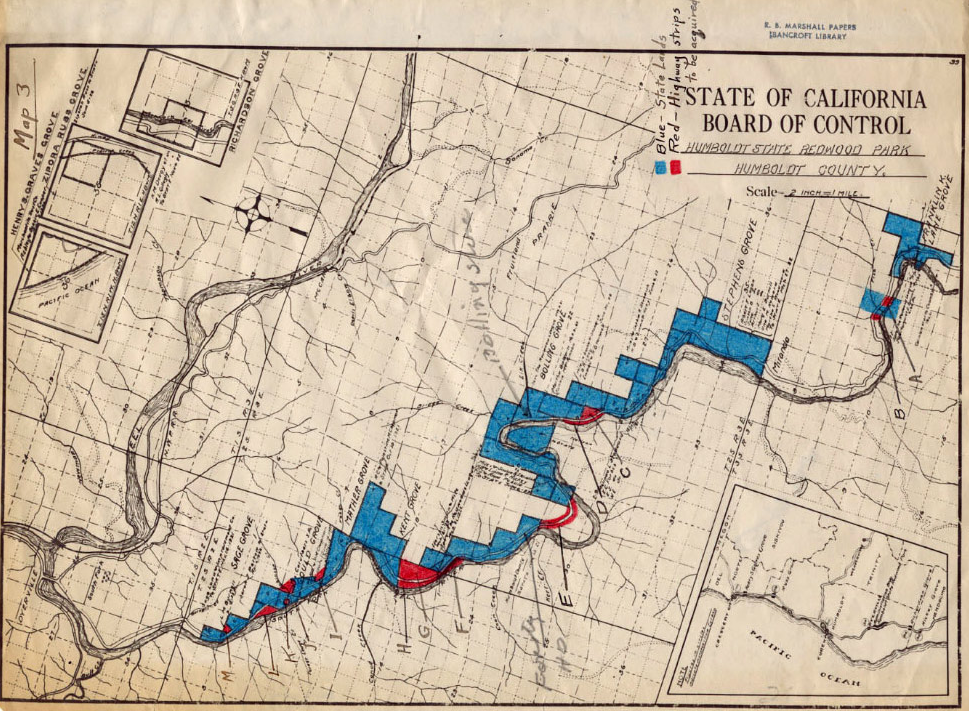The First State Park
California’s first state park was born amid the national turmoil of the Civil War. In 1864, California’s congressional delegation championed and President Lincoln signed a bill ceding two tracts and 39,000 acres of federal land in the Sierra Nevada to the state, to "be held for public use, resort, and recreation." One tract included a spectacular granite gorge — the other a grove of ancient giant sequoia trees. The Yosemite Grant was California's — and the nation's — first state park.
Why not a national park? Congress, after all, was essentially transferring the Valley and Mariposa Grove of Big Trees to California to be managed as a national trust. And eight years later, when Congress set aside the headwaters of the Yellowstone River as a public park, the land would be designated a national and not a state park — but only because there was then no state to oversee it; at the time, Wyoming, Montana, and Idaho were federal territories. In 1864, by contrast, California agreed to administer Yosemite through a state Yosemite Park Commission, sparing the federal government the bureaucratic hassle of managing the park itself. Yosemite, set aside eight years before Yellowstone, in many ways was America’s first national park, just not technically so.
Eventually, it was designated a national park. By the 1880s, California's Yosemite Park Commission had alienated many conservationists, including John Muir and his Sierra Club, with its perceived mismanagement of the grant. Too many structures, including hotels, cabins, and artist's studios, had sprung from the valley floor, and too much meadowland had been given over to farming and grazing. When Congress acted in 1890 to protect the watersheds surrounding the Yosemite Valley and Mariposa Grove, instead of expanding the state park’s boundaries, it created a new Yosemite National Park under federal control. Criticism of the state’s management of the Yosemite Grant, meanwhile, mounted. Finally, in 1906, California retroceded the land to the federal government, Yosemite National Park absorbed the Yosemite Grant, and California’s first state park was no more.
Saving the Redwoods
Intensive logging had reduced much of this ancient forest, which once stretched from Big Sur to the Oregon border, to stumps. In response, a group of
Bay Area aesthetes under the leadership of photographer Andrew Hill and Stanford University president David Starr Jordan formed the Sempervirens Club (a reference to the redwood’s scientific name, Sequoia sempervirens) and urged the state to preserve a portion of the remaining old growth as a state park. In 1902, securing the support of business, agricultural, and civic interests, the club succeeded. The state purchased 3,800 acres in an area of the Santa Cruz Mountains known as Big Basin and established there the California State Redwood Park.
Named after California’s coast redwood tree, the Sempervirens Club successfully advocated for the 1901 creation of the California State Redwood Park (since enlarged and renamed Big Basin Redwoods State Park). c. 1901 | California State LibraryHere, too, a national park might have seemed like the ideal solution, but the federal government had already investigated and rejected that possibility. Most of California’s redwood forest had already passed from public to private ownership, and (with the notable exception of Muir Woods National Monument) there was no precedent for a national park that wasn’t created from the public domain. And so a state park it was. Later, in the 1920s, when the Save-the-Redwoods League succeeded in protecting groves in Humboldt, Del Norte, and Mendocino counties, the resulting park, too, was at the state rather than the national level.
The Birth of a True State Park System
By the mid-1920s, California had assembled a collection of five state parks, including Mount Diablo, Burney Falls, Bidwell, and the two redwood preserves, but it still lacked a true state park system. Part of the problem was geographic distribution: all the parks were located in northern California, far away from the growing Los Angeles metropolis. Another was that authority was divided among multiple agencies: a California State Redwood Park Commission, a Mount Diablo State Park Commission, the State Board of Forestry.
Led by groups like the Save-the-Redwoods League, conservationists clamored for more parks as well as more systematic management. In 1927, they prevailed. The legislature created a central state parks bureaucracy that would assume authority over all existing and future parks. Even more importantly, it authorized a $12 million fund — subject to voter approval — for the acquisition of new parkland.
In the ensuing campaign to secure passage of the $6 million bond issue (to be matched dollar-for-dollar by private contributions), conservationists found an unlikely ally: the automobile. It might seem strange that the automobile, with its well-earned reputation as an environmental villain, played midwife to California’s state park system. Such are the ironies of history. Before mass production made the automobile — once a plaything of the rich — into something ordinary people could afford, outdoor parks and preserves like Yosemite and Big Basin were the province of those wealthy enough to afford train fare, dining, and lodging.
In the 1920s, automobile ownership among Californians rose exponentially, and what followed was a dramatic democratization of outdoor recreation. Suddenly, Californians couldn’t find enough places of scenic beauty where they could roll their cars onto a meadow or into a stately grove, pull the hand brake, and camp. Suddenly, state parks within a day’s drive were in high demand. With widespread public support — seconded by groups like the Automobile Club of Southern California -- voters approved the bond issue in 1928 by a three to one margin. Not a single county opposed it.
With $12 million now at its disposal, the newly formed California State Park Commission hired landscape architect Frederick Law Olmsted, Jr. to recommend park sites for acquisition. Olmsted, a nationally renowned expert on parks and son of Central Park’s founding father, spent a year surveying California. He and his team paid considerable attention to the state's endangered redwood groves — but also to the deserts, mountains, and beaches that provided recreational opportunities from the Mexican border to the Oregon state line.
Olmsted’s report dated Dec. 29, 1928, would guide the state park system’s development for decades. Several of his recommendations never came to pass; Lost Horse Valley, for instance, soon became part of Joshua Tree National Monument, and Kings Canyon was made into its own national park.
But among Olmsted’s 125 recommended park sites are many of the jewels of California’s present-day state park system, which the state soon acquired: the big trees of Calaveras, the badlands of Anza-Borrego, the wave-beaten coast of Big Sur.
- written by Nathan Masters
CLICK HERE to see the original article and multiple photos from KCET public television.


 RSS Feed
RSS Feed